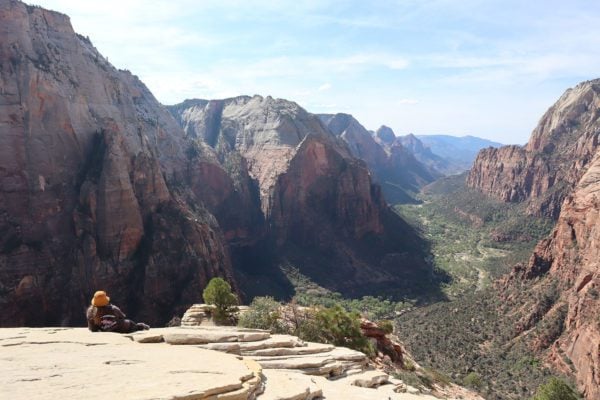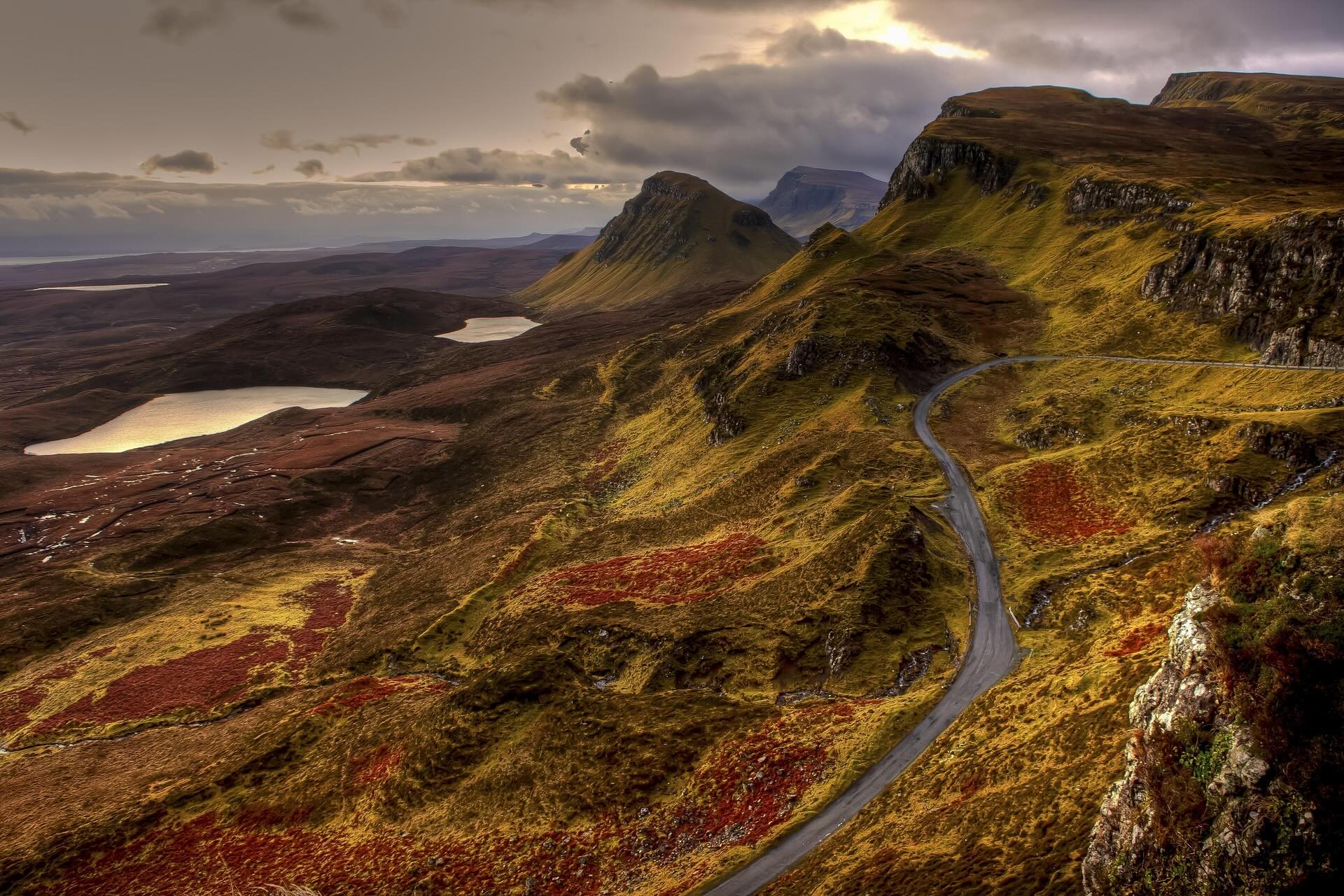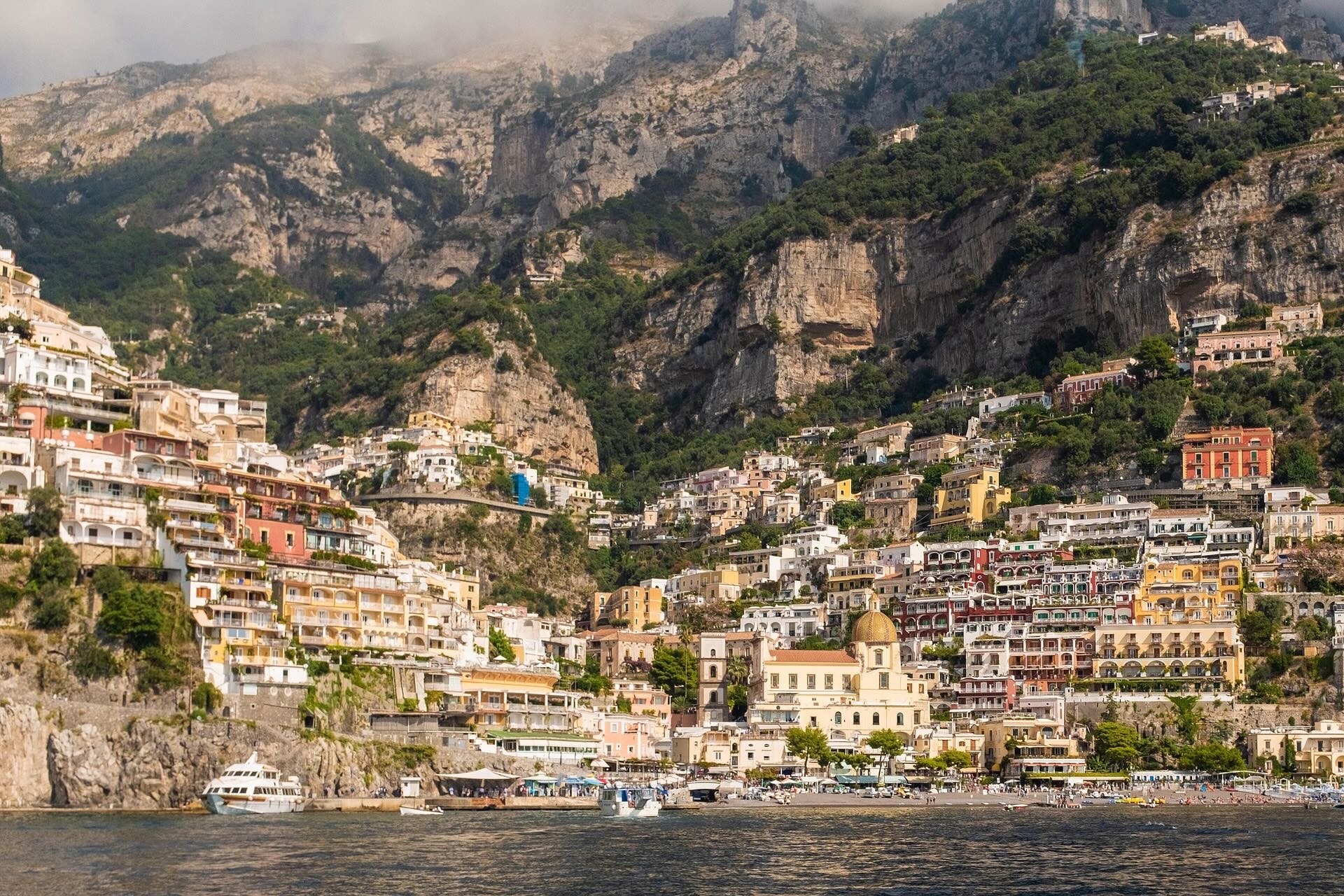3 Days In Kenya
Day 1: Exploring Nairobi and Wildlife Attractions
The first full day of this 3 days in Kenya itinerary is mostly dedicated to experiencing wildlife without leaving the confines of metro Nairobi. We’ll also do a bit of shopping and pay a visit to the national museum. Aim to leave the hotel by 7 am to not only maximize the sightseeing time but also to maximize the chances of spotting lions.

Nairobi National Park
With the backdrop of Nairobi’s skyscrapers and commercial jets touching down in a nearby airport, it’s hard to believe that wildlife can flourish so close to Kenya’s largest metropolis. But that’s the magic of Nairobi National Park, a 117 km2 sanctuary just seven kilometers away from the madhouse of the city center (~40USD per adult).

Partially fenced, the park is home to a huge range of wildlife including the endangered black rhino, lions, leopards, cheetahs, hyenas, buffaloes, and giraffes. The animals can freely roam the grounds and migrate here due to the partial enclosure.
Roads within the park are in generally good condition so you don’t have to have a 4X4 vehicle. However, having a sturdier and higher vehicle will make things easier in rougher sections as well as for better-viewing animals. If you don’t have your own car, you can pay a little extra and join the park’s guided safaris.


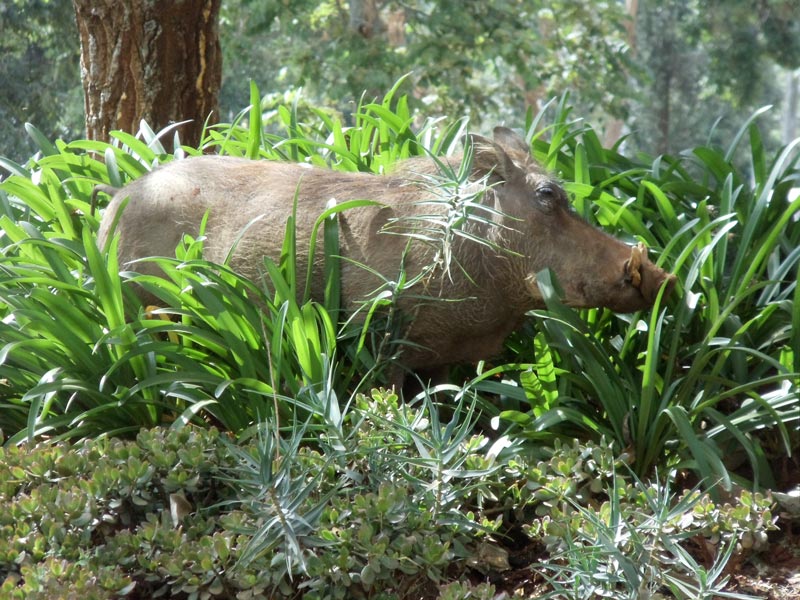

Personally, I felt the added value of having my own local guide. We drove at our own pace and I greatly benefited from my guide’s deep knowledge, enthusiasm, and appreciation of wildlife. We ventured away from the plain and into the hills, where we saw most of the giraffes on that day, and also paid a visit to the Ivory Burning Monument where, in 1986, President Moi famously torched 12 tons of ivory to mark Kenya’s stance on conservation.
Enter as early as possible or stick around for dusk if you’re keen on spotting lions.
David Sheldrick Wildlife Trust
Located within the grounds of Nairobi National park, the next obvious stop is at the David Sheldrick Wildlife Trust, better known as the elephant sanctuary. Promptly at 11 am, visitors are escorted to a viewing area for an up-close and personal meeting with the orphaned elephants.
Local rangers begin the spectacle with an overview of the conservation effort undertaken by the trust while prepping huge bottles of milk for the upcoming feeding. Shortly after, young elephants emerge from the nearby bush on a race to grab the nearest bottle. What happens next is truly spectacular, as you witness the elephants gulp up their milk and play with each.
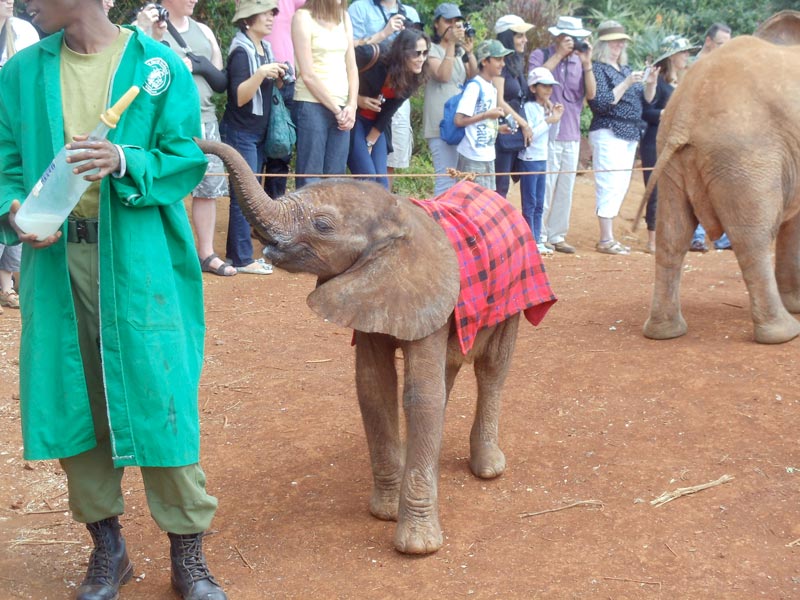

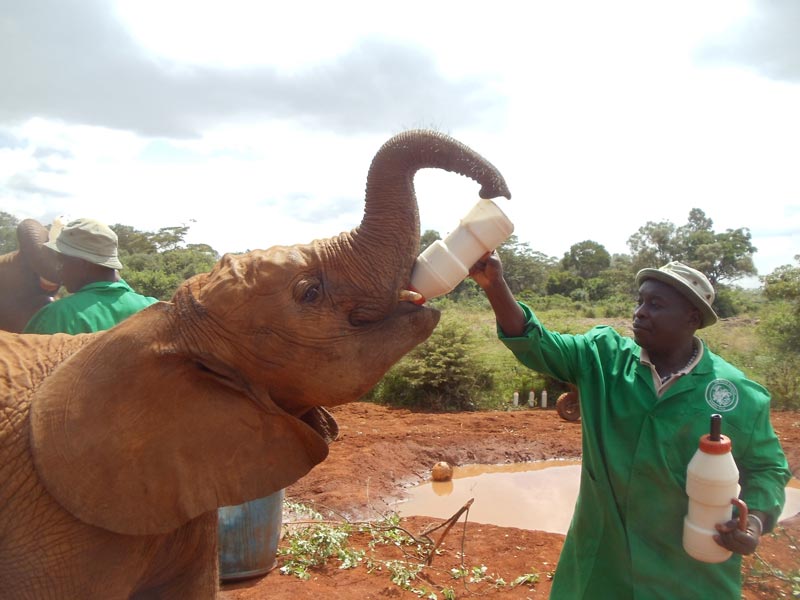
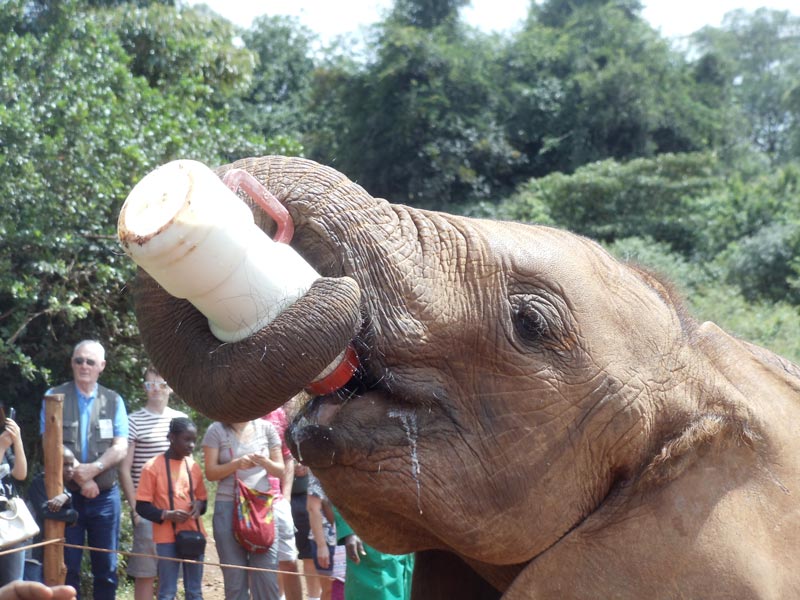
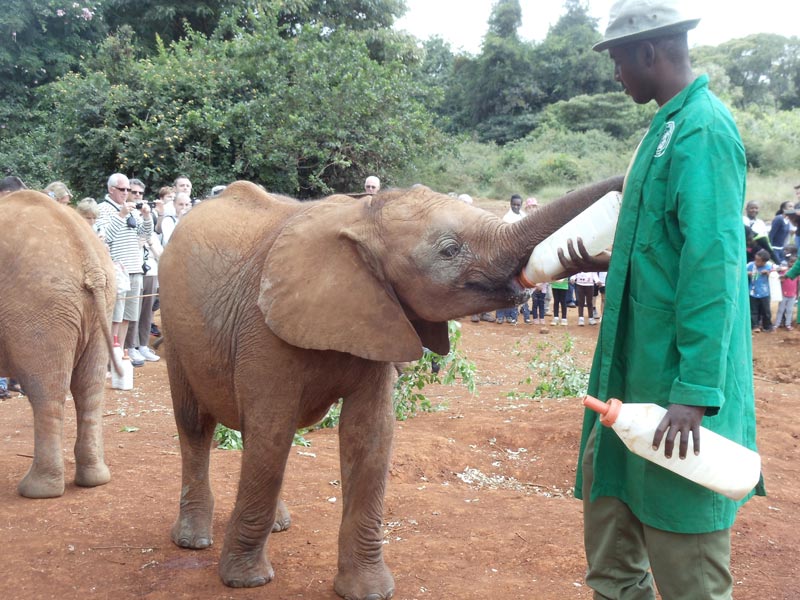
When all bottles have been emptied, you have the option of touching the elephants, a powerful and lasting experience. After the youngsters had their snack, it’s time for the adults to get their milk and the process is repeated. On your way out, check out the orphaned rhinos.
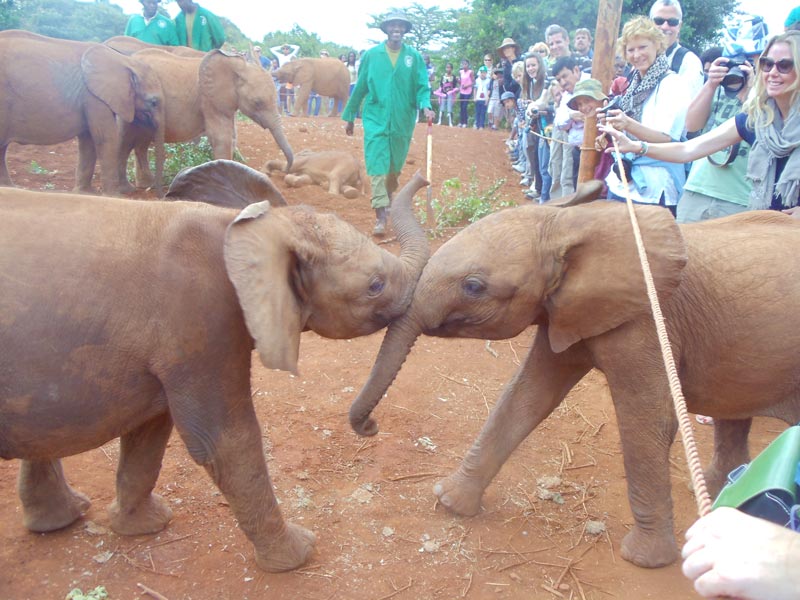
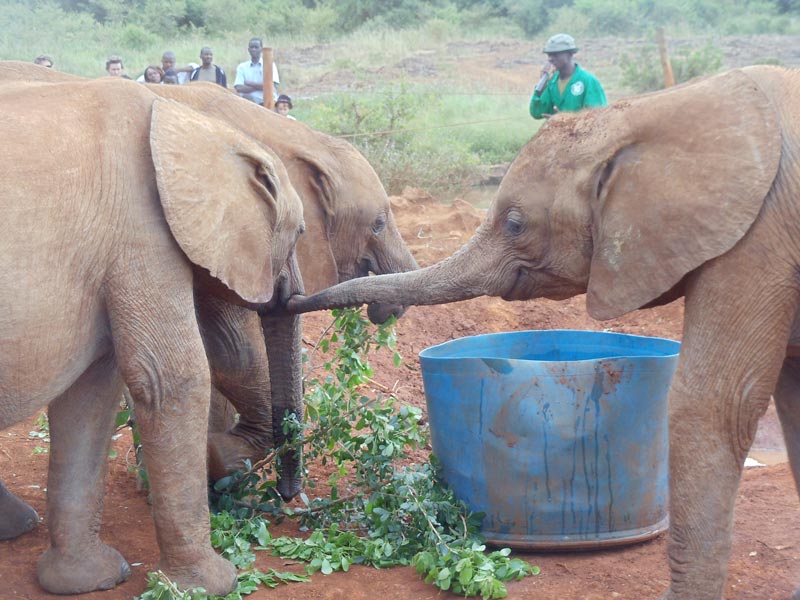
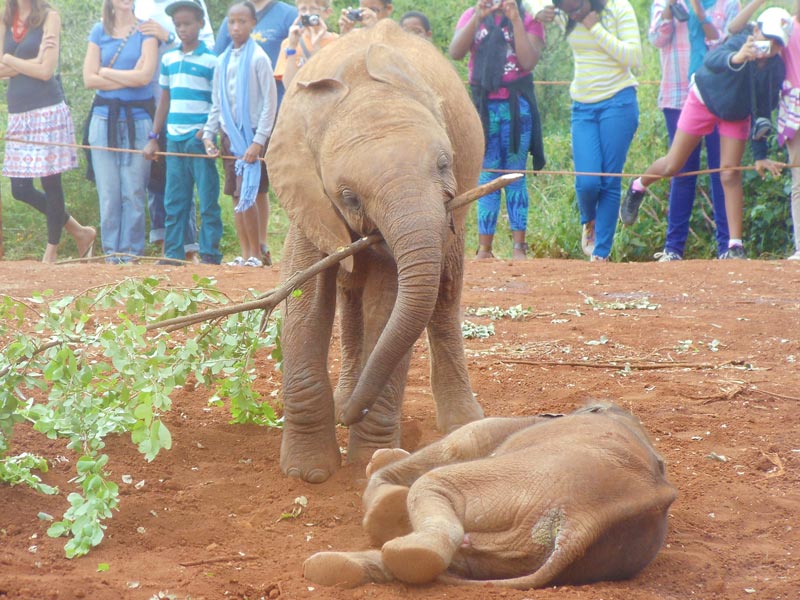
Be sure to arrive slightly before 11 am to purchase tickets. On some days, a second session in the afternoon is offered.
Giraffe Center
After close encounters with elephants, it’s time to get up close and personal with giraffes. It’s about a 25-minute drive from the elephant sanctuary to the Giraffe Center, a highly acclaimed conservation center that focuses on the elegant Rothschild’s Giraffe.
When conservation efforts began in the late 1970s, Rothschild’s Giraffe was on the brink of extinction. Thanks to the efforts made, the numbers are rising. The center takes injured giraffes and releases them back into the wild as well as breeding new giraffes.
The highlight is the visit to the Giraffe Center is without a doubt the climb to the feeding deck and the chance to see and touch this magnificent animal. Think about it, even if you see giraffes in the wild because they’re so tall, you never get to look them in the eye. This is what makes this experience so unique. To really remember your visit, ask nicely for a wet giraffe kiss.
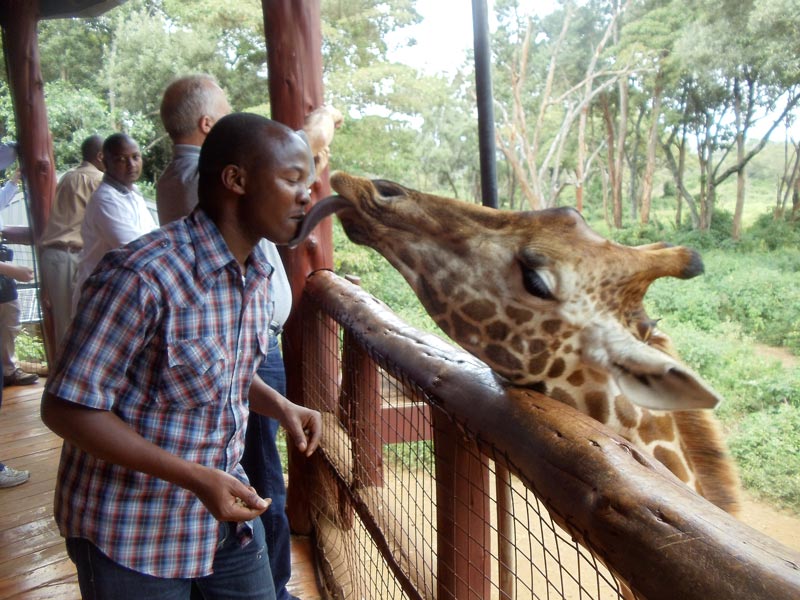
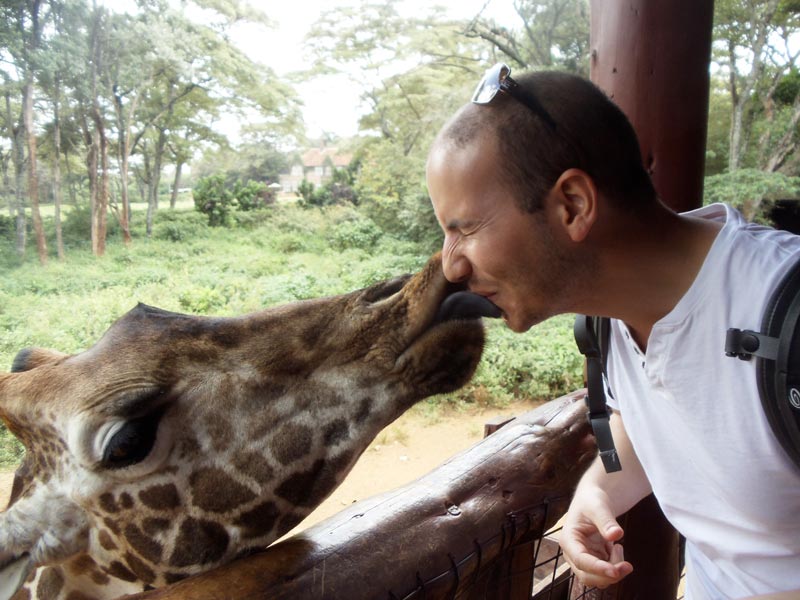
Karen Blixen Museum
Fans of the classic novel and Hollywood film, Out of Africa, must pay a visit to the Karen Blixen Museum. The museum is the actual former residence of Blixen and the grounds offer a pleasant stroll. For lunch or a coffee break, stroll to the lovely coffee garden. We’ll soon have a very carnivorous dinner so don’t fill up too much. However, if all-you-can-eat meat isn’t your thing, stick around for a bit longer and enjoy a proper lunch.
National Museum and Snake Park
If you have the time and enjoy natural history museums, be sure to spend a few afternoon hours at the National Museum. Highlights include an impressive (stuffed) bird and mammal collection as well as evidence of early human settlement in Africa in the form of skulls. To add to the educational experience, head to the Nairobi Snake Park, located within museum grounds.
Shopping at the Maasai Market
If you love to do your souvenir shopping in open markets, the Maasai Market is the best option. As its name suggests, it’s operated by the Maasai, arguably the most famous ethnic group in this part of Africa thanks to their unique culture (and jumping ability), but not exclusively. The market changes venues throughout the week so inquire with your hosts when checking in to fit it in your itinerary.

On the day that I paid a visit to the Maasai Market in Nairobi, the venue was the rooftop of the Westgate Shopping Mall, which made it convenient to buy souvenirs as well as local produce in the shops below such as Kenyan coffee and nuts. Do be prepared to be smothered by sellers in the market and to do a lot of bargaining.
- It’s useful to come here with a local guide who can help you determine the quality and the value of items you fancy.
- Only bargain for items you are truly interested in.
- Be friendly, yet firm
- Reach a win-win situation where you pay a fair price and the merchant is happy. A few dollars in their favor is worth a lot more than a few dollars left in your pocket.
Nairobi has several fine craft shops if you are keen on purchasing high-end souvenirs. You’ll save a lot on local coffee, nuts, and dried fruit by purchasing in local supermarkets rather than on souvenirs shops or the duty-free.
Dinner at the Carnivore Restaurant
Not a recommended option for vegetarians, the Carnivore Restaurant is one of the most popular restaurants in Nairobi and not only among tourists. It’s a bit pricey but well worth it if you enjoy eating meat. Apart from the all-you-can-eat option, the main draw at this establishment is the various types of game meats that are offered, in addition to the usual classics. Over the years, these options have been greatly reduced to reflect Kenya’s change in attitude towards conservation.

You’ll start with some salads before waiters keep coming at you with huge skewers of chicken, beef, pork, and wild delights such as ostrich and even alligator (not bad at all). When you’ve had enough, simply lower the small flag on your table.

